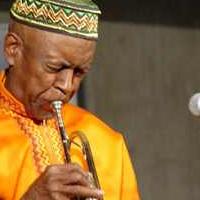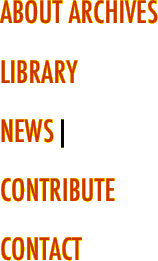








JACOB H. CARRUTHERS FOR INNER CITY STUDIES
Kelan Phil Cohran
Compendium of many strands of secular Black music, Phil Cohran's Artistic Heritage Ensemble (AHE) was the direct link between the Sun Ra Arkestra on one hand and Earth, Wind & Fire (EWF) on the other. However, because composer and instrumentalist Cohran never ventured far from his Chicago home base and because the legendary aggregation's one released LP was on his own Zulu label, few know about his work. Now this attractively packaged reissue CD arrives with more than an hour of the AHE circa 1968 and you can see why the band was held in such high esteem. Like the Arkestra at that time and certain groups in the Association for the Advancement of Creative Musicians (AACM), the ensemble mixed a patina of experimental music with unpretentious funk and polished Black show biz. Percentages of instrumental improv, Afro-centric rhythm and supper club soul shift from track to track here, explaining the AHE's popularity in all parts of Chicago. Nearly 33 years later it's also instructive to enumerate who was in the band. Among the musicians are saxophonist Donald Myrick and trombonist Louis Satterfield who were with EWF in its earliest, loosest configuration; blues drummer Bob Crowder Jr.; tubaist Aaron Dodd, a future 8 Bold Soul; and guitarist Pete Cosey, best known for his solos on Miles Davis' jazz-funk breakthroughs, AGHARTA and PANGAEA.
Cohran himself, who still teaches and works in The Windy City, played his cornet and his self-created violin-uke in the Arkestra from 1958 to 1961. Shortly afterwards he was one of the founders of the AACM. As a matter of fact, the initial AHE was a quintet with AACM pianist Amina Claudia Myers as vocalist. This large scale AHE resulted from Cohran's split with the AACM, which he found too experimental. The rupture can be understood in light of tracks like "The Minstrel", which is certainly more populist than anything AACMers were doing at the time. Built around two female vocalists who come across as double Aretha Franklins or maybe twin June Tysons, the tune goes James Brown's "Sex Machine" one better with enough drums on it to fill a small percussion store. On the other hand, "Motherhood" and "New Frankiphone Blues", the shortest tracks, resemble the kind of near pop songs that were being played every day of the week at the South Side's Regal Theatre, where many of the musicians worked. Sung in a slurred sub-Dinah Washington style by Patricia Ann Smith, the former tune resembles some of those mambo-inflected blues Washington did with a tenor sax led combo. The later is a novelty blues built around the unusual sound Cohran got from the electrified thumb piano he called the frankiphone. It has an ending resembling PLEASE, PLEASE, PLEASE, which must have been quite a familiar riff to those AHEers that worked as Chess Records session musicians.
Cohran had higher musical aspirations though, with the longer tunes here more orchestral than simple funk riffs which propelled many of the consciously down home themes of the time. Moreover, titles like "The Minstrel", "Unity" and "Motherhood" reflected the universal consciousness theme of late 1960s Black Nationalism, which was being offered up by jazzers as different as Rahsaan Roland Kirk, Pharoah Sanders and Horace Silver.
"On the Beach", for instance, is awash with a continuum from the massed horns, backing the unique violin-uke duet with Eugene Easton's oboe. As solos shift from instrument to instrument, the semi-classical motif changes into something more African with Henry Gibson's bells, Satterfield's bass and rest of the rhythm section giving an ethnic underpinning to the proceedings.
Then there are the two versions of "Unity", one of which has apparently made its way into many Best Of funk collections. Boasting a drums and oboe lead (!), the first shows off Cohran's links to Sun Ra, though that might not have been clear at that time to those unfamiliar with the little-recorded Arkestra.
Almost twice as long, "Unity Live 1968" has a few sound problems. Still, prodded along by Dodd's rhythmic tuba exhortations, sawing violin runs and most of the horn section and drummers, it builds for almost 15 minutes of mesmerizing excitement like one of Charles Mingus gospel-blues excursions. At the stop time centrepiece, Cosey fires off note after note of bullet-like guitar notes in a style that could be dubbed funk metal. Playing like that made his reputation a few years later, and has kept him quiet since.
These soul flourishes and vocalized chants make this CD very much of its time. But the strength of Cohran's themes and the band's execution also make the session timeless.
Audio sample
Tags: African Harp, Creative Musicia
Visit our Facebook page and follow us on Twitter!
Check our EVENTS page for upcoming shows!
©2014 The Great Black Music Project. All rights reserved.